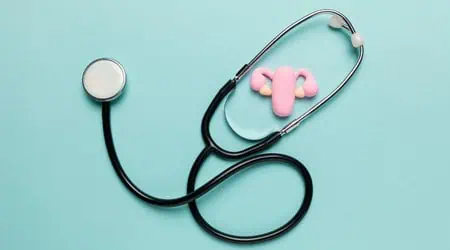 PCOS is the hormonal condition of having high androgens or male hormones. Endometriosis is an inflammatory disease that can cause severe pelvic pain. They’re two very different conditions but also both quite common. That’s why it’s possible to have both PCOS and endometriosis at the same time.
PCOS is the hormonal condition of having high androgens or male hormones. Endometriosis is an inflammatory disease that can cause severe pelvic pain. They’re two very different conditions but also both quite common. That’s why it’s possible to have both PCOS and endometriosis at the same time.
Here’s how to differentiate the symptoms of PCOS from the symptoms of endometriosis and where to start if you have both conditions.
PCOS is a hormonal condition that causes facial hair
PCOS is the condition of androgen excess when all other causes of androgen excess have been ruled out.
With PCOS, there may or may not be “polycystic ovaries” on an ultrasound study but just to be clear: polycystic ovaries are not ovarian cysts, and PCOS cannot be diagnosed (or ruled out) by ultrasound. Why? Because the so-called “cysts” of polycystic ovaries are just follicles or eggs, which are normal for the ovary.
Also, pain is not a symptom of the hormonal condition PCOS so if pain is your main symptom, there’s something else going on.
Endometriosis is an inflammatory disease that causes pain
Endometriosis is an inflammatory disease that causes pain and lesions, and a type of ovarian cyst called an endometrioma or chocolate cyst. Endometriosis is affected by hormones but is not caused by hormones or hormone imbalance. The production of ovarian hormones is usually normal with endometriosis.
If you suffer severe pain, you should be assessed for endometriosis. That’s true even if you’ve already been told you have PCOS. Because endometriosis cannot be ruled out by ultrasound. Read Is it normal period pain or endometriosis?
PCOS versus endometriosis
Here are the symptoms of PCOS and endometriosis.
| Symptoms of PCOS | Symptoms of endometriosis |
| hormonal condition | inflammatory disease |
| pain is not a symptom | pain is the main symptom |
| androgen excess | normal hormones |
| possibly heavy periods | possibly heavy periods |
| possibly long bleeds | possibly long bleeds |
| bleeding between periods | bleeding between periods |
| infertility | infertility |
As you can see, the only common symptoms of PCOS and endometriosis are heavy periods, bleeding between periods, and infertility—but for very different reasons.
With PCOS, abnormal bleeding and infertility are caused by problems with ovulation, and the solution is to restore ovulation.
With endometriosis, abnormal bleeding and infertility are caused by inflammation in the pelvis, and the solution is to reduce inflammation.

If you have both endometriosis and PCOS, treat endometriosis first
Treat endometriosis before PCOS because 1) endometriosis is a more serious disease and 2) treating PCOS before you treat endometriosis can increase estrogen (and lower androgens) and therefore worsen endometriosis.
Possible treatments for endometriosis include surgery, a dairy-free diet, a low-nickel diet, zinc, iodine, turmeric, and N-acetyl cysteine. Read Immune treatment for endometriosis.
Once you’ve reduced some of the inflammation of endometriosis, you can turn your attention to finding treatment for your type of PCOS and treating that. Of course, treating PCOS is only possible if you’re not on the pill.
Ask me in the comments.
